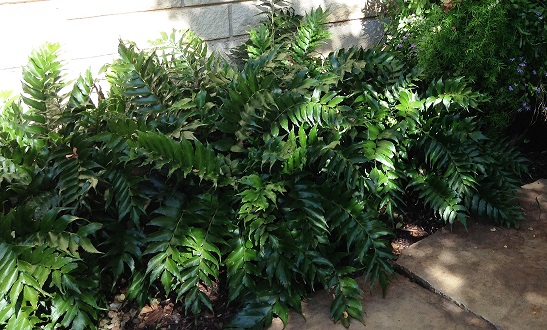Top 5 Favorite Shade Perennials for Texas
October 20, 2013 | By webadmin
Here in Texas, we need to plant shade trees in order to cool off our homes and landscapes. But that very same shade that cuts our energy bill and makes our homes more comfortable, can also be a challenge when it comes to our shade gardening projects. It can be difficult to find plants that will thrive in those dark, hidden spots under large shade trees while also offering up color and texture.

But never fear; we’re here to tell you that even the shadiest spot can be the most vibrant part of your garden! Here’s our top 5 shade perennials you should plant now!
Lenten Rose (Hellebore, Helleborus sp.) Even in full shade, Hellebore will reward you with unique blooms from fall through early spring. While traditional varieties have downturned blooms, the new breeds flowers sit more upright. Hellebore have deep green, evergreen foliage that make a wonderful backdrop for low growing annual color such as primrose or cyclamen. This tough perennial tolerates heavy clay, dry shade and is one of the easiest perennials you’ll grow. Plants grow 12” -16” tall and many flower colors are now available.
Japanese Holly Fern are a shade garden classic! It’s easy to understand why with its thick glossy fronds and textured undersides covered in spores. In most of our mild Texas winters it is also evergreen. 24” tall & wide
Turk’s Cap - Shade or sun, Turk’s Cap is a great plant for our area! It blooms red, pink or white from spring through fall. Plus, Turk’s Cap attracts hummingbirds and butterflies. Perfect for areas that don’t receive a lot of water. Grows quickly. 4’-6’ tall
Columbine ‘Texas Gold’ is one of the earliest perennials to bloom in spring. It has delicate, slender foliage and spider-like bright yellow blooms. Columbines are good re-seeders and grow quickly. Plant them in groupings as they would grow in nature for a natural look.
Leopard Plant (Farfugium sp. Previously Ligularia sp.) - This shade loving beauty produces large hand-sized round leaves that can be spotted, hence the name leopard plant, or varying shades of green. Some of smooth and shiny, and some are fuzzy. Plants produce tall spikes of bright yellow blooms in summer and fall. Foliage grows to about 24” and flower spikes can reach 3-feet.
